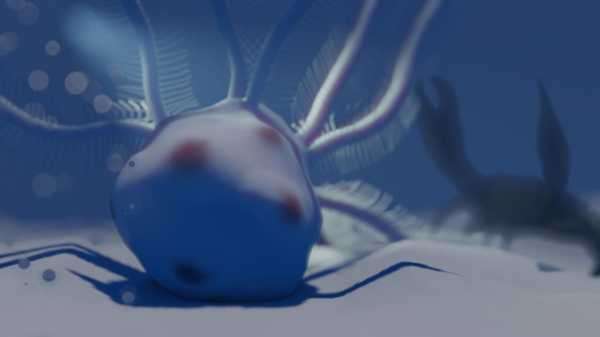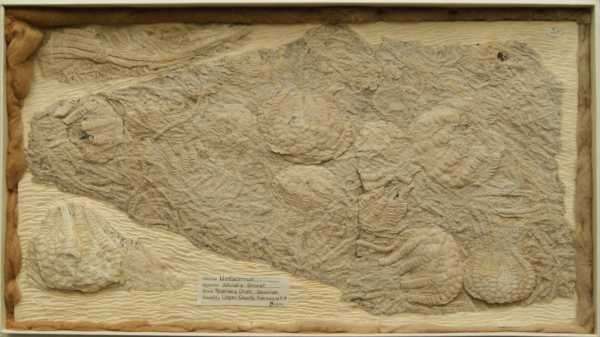
Reconstruction of the Cretaceous marine animal Marsupites testudinarius.
Weird, multisided geometric shapes called buckyballs have been discovered in an unexpected place: marine animals that lived 80 million years ago.
Microscopic forms of buckyballs have been found in molecules within cosmic dust, in gases and in some types of rocks. But researchers were surprised to find them at a much larger scale in fossils of two species of Cretaceous crinoids, which are relatives of modern starfish and sea urchins. The plates on the crinoids’ bodies created multifaceted, hollow structures that the scientists identified as buckyballs.
Their discovery is the first evidence that the bizarre buckyball shape occurs naturally at such a large scale, the scientists reported in a new study.
Buckyballs, short for “Buckminsterfullerenes,” are large spherical molecules, that are made up of 60 carbon atoms linked together in pentagons and hexagons, forming a surface like that of a soccer ball. These strange molecules, first discovered in space in 2010, got their name from architect Buckminster Fuller, who popularized a similar structure in the 1940s called a geodesic dome.
In space, buckyballs exist in gas and in particles. They have also been detected on Earth in gases emitted by burning candles and in certain minerals, according to NASA. However, that distinctive buckyball shape was previously unknown to exist in animals — living or extinct, said study co-author Aaron Hunter, a research fellow at The University of Western Australia’s School of Earth Sciences.
“This is the first time we have found such a structure in fossils,” Hunter said in a statement.
Crinoids first appeared during the Cambrian period (about 543 million to 490 million years ago). Most crinoid species — also known as sea lilies or feather stars — died during the Permian mass extinction, around 250 million years ago, but some survive to this day. Animals in this group have a goblet-shaped body called a calyx, topped with branching arms. Many of the fossil forms had stemlike structures that anchored them to the seafloor, according to the British Geological Survey.
Dozens of fossils of two species of late-Cretaceous crinoids — Marsupites testudinarius and Uintacrinus socialis — provided scientists with a highly detailed look at the calyxes’ hexagonal and pentagonal plates, made of calcium carbonate. The study authors created a graph that mapped the plates, visualizing how the animals’ bodies would have looked in three dimensions.

Fossils of the Cretaceous crinoid Uintacrinus socialis are preserved in a slab held in the collection of the Sedgwick Museum of Earth Sciences in Cambridge, UK.
Overall, the two species share a structurally similar body plan. But U. socialis had a bigger calyx made of numerous small, lightweight plates, each of which had between four and eight sides. The calyx of M. testudinarius, by comparison, had fewer plates with only five or six sides, and these were much larger than the plates on U. socialis.
Both of the crinoids had calyxes that were shaped like buckyballs. “The ball-like structures, able to withstand very heavy loads, formed around them to protect them from the harms of the ocean,” Hunter said in the statement.
However, there were critical differences between the two animals, the scientists wrote in the study. M. testudinarius’s calyx, with bigger plates of similar shapes, more closely resembled the buckyball carbon molecule. This would have made the calyx stronger and more stable. But U. socialis’s calyx was broader with more variation in the number of plate sides, making the calyx more likely to bend and buckle. Its calyx was probably more useful for buoyancy than for protection against predators, the researchers reported.
This highly unusual body structure could have helped crinoids adapt and spread through ocean depths around the world. Yet many questions remain about how their strange buckyball bodies evolved, and why this shape has only been found in two extinct species that vanished between 84 million and 72 million years ago, according to the study.
“It still remains a mystery why these successful structures did not evolve again,” Hunter said.
The findings were published in the May issue of the journal Paleontology.
Sourse: www.livescience.com





